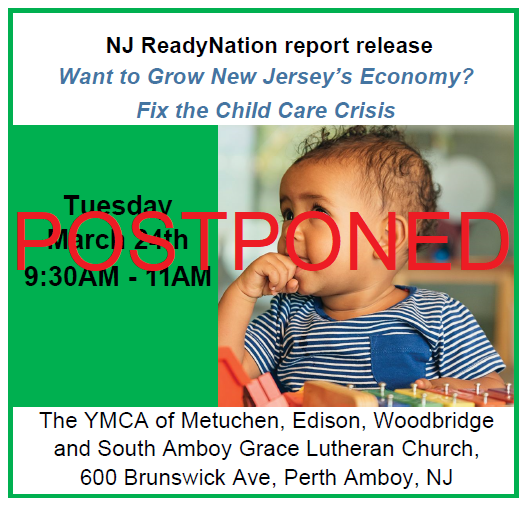Posted on March 22, 2020
As child care advocates, we are calling for strong measures to fully sustain New Jersey’s child care system for children, families and the economy. This extraordinary health crisis demonstrates, in the most compelling way, the importance of affordable, accessible, safe child care for children and families.
Our first priority is ensuring the health and well-being of children and all who care for them in child care settings. That is why we believe that child care programs must be mandated to close, just as schools have been closed. However, we understand that children of emergency responders and other essential personnel must have access to care during this uncertain time. This must – and can - be done in a way that fully protects children and caregivers.
At the same time, strong measures must be taken to protect the fragile infrastructure of our child care ecosystem. The decisions we make now will have a longstanding impact on the future of child care, particularly subsidized care for low-income families. Without immediate action, many child care programs are at risk of going out of business permanently.
We, the undersigned organizations, urge Governor Murphy and his administration to adopt the following policies.
Mandate child care programs to close immediately, consistent with the mandatory closure of schools, with specific provisions to address the child care needs of first responders and essential workers.
Continue to make child care subsidy payments to all providers, either open or closed. Base payment on each program’s March 1, 2020 enrollment numbers, not attendance, and continue payment through April 30, 2020. Provide full payment to cover parent co-payments. Assess future action, depending on the status of the pandemic at that time.
Ensure access to unemployment insurance for family child care homes and center-based providers who do not accept subsidies.
Rescind the March 16th suspension of DCF licensing standards for minimum play space requirements and group size, so that children who need child care, will stay as safe as possible.
Develop emergency plans to ensure that health personnel, emergency responders and other essential services have access to child care if needed. Such plans must provide a clear definition of the essential personnel and establish guidelines for the safe provision of care.
Raise the child care subsidy rate by an additional $100 per month per child to support the added costs of those centers that remain open to provide child care to essential personnel.
Signed by:
- Advocates for Children of New Jersey (ACNJ)
- New Jersey’s Statewide Afterschool Network (NJSACC)
- New Jersey Association for the Education of Young Children (NJAEYC)
- New Jersey Head Start Association (NJHSA)
- Coalition for Infant Toddler Educators (CITE)
- The New Jersey Family Child Care Providers Association (NJPCCPA)


